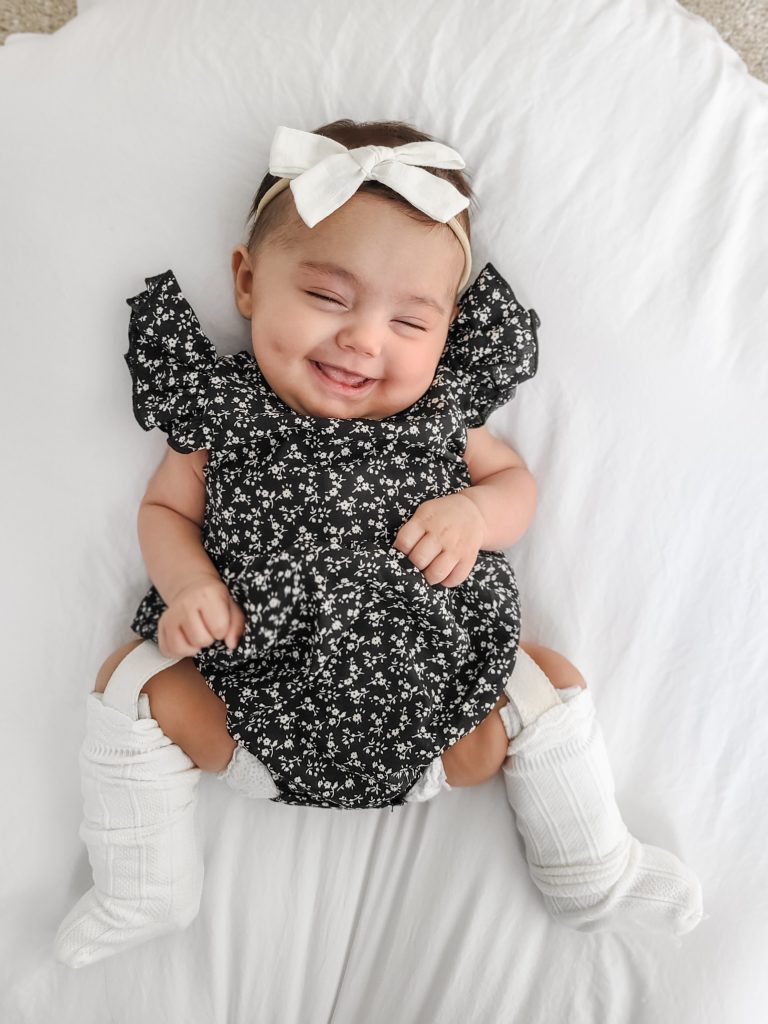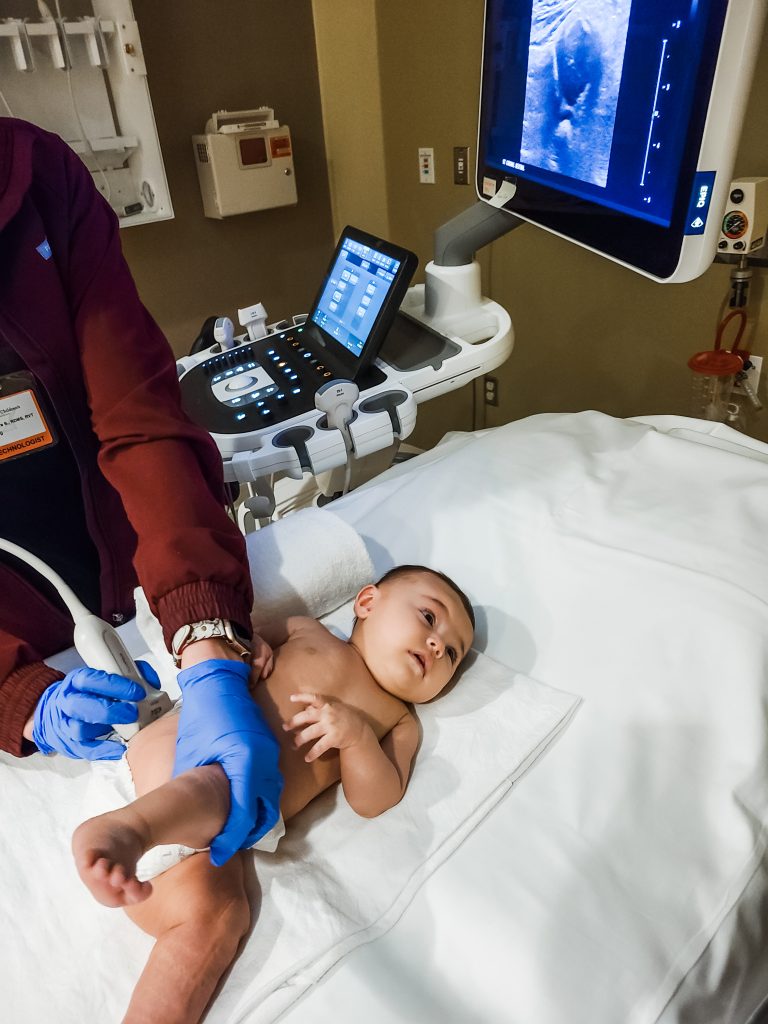Developmental Dysplasia of the Hip (DDH) is a condition where an infant’s hip joint doesn’t develop correctly. In a normal hip joint, the ball should move in all directions but it always stays inside the socket. With DDH, the ball of the joint doesn’t sit nicely inside the socket, so it can dislocate. DDH can occur before the baby is born or can occur after birth. It can impact one hip or both. It can affect any baby, but a baby has a higher chance of developing DDH if:
- baby is a girl (Eva was)
- it’s your first-born (Eva was)
- baby was breech (Eva was not)
- there is extended-family history of DDH (we did not have this)
- one or more of your previous children had DDH (my future children have increased risk)
- limited womb space, i.e. baby had limited amniotic fluid (Eva’s case) or baby is a twin or multiple
The International Hip Dysplasia Institute and Kids Health are excellent resources for learning more, and check out this list of hip-safe and hip-healthy products!
On December 31, 2020 (I remember it like it was yesterday), Eva had her 2 month check-up with her pediatrician. The visit was going exceptionally well — Eva was gaining weight and growing beautifully for being a preemie, we briefly discussed the concern I had with the flat spot on the back of her head and then the pediatrician checked Eva’s hips. Standard protocol.
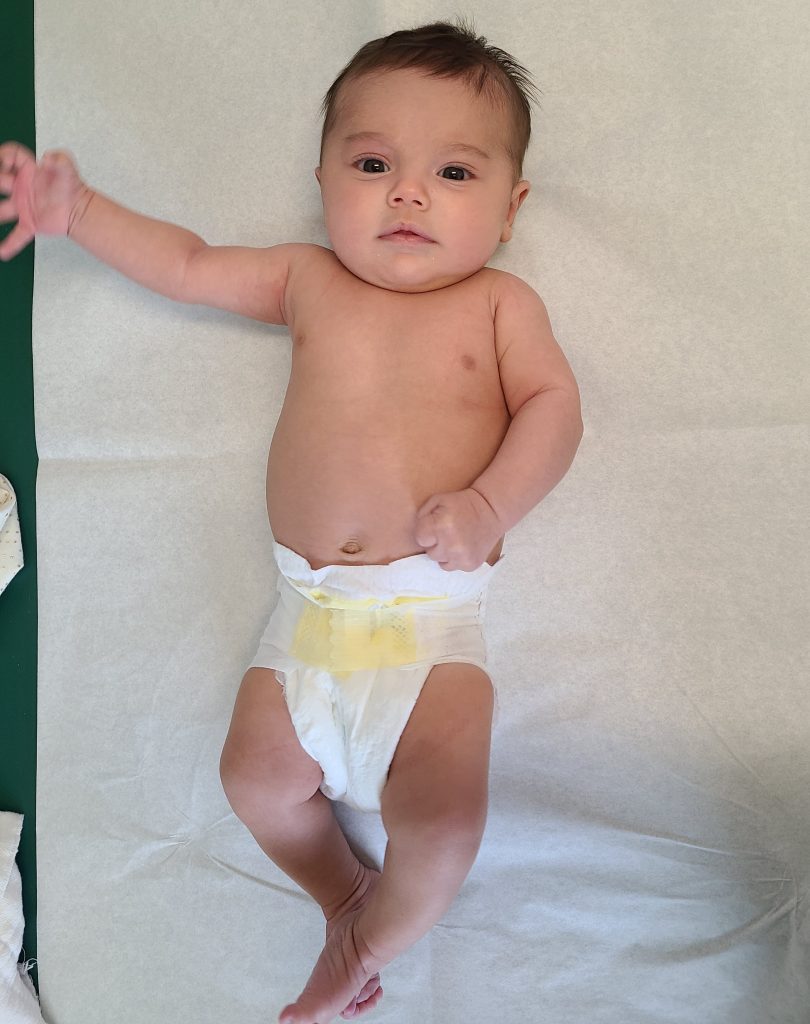
We had been chatting it up the whole session and all of a sudden our pediatrician fell silent. She calmly explained that she felt a significant “clunk” (she emphasized it was a “clunk” and not a “click”) in Eva’s right hip, where her hip essentially dislocated. She didn’t even check the left hip for fear it’d do it on the left too. I could feel all the blood rush out of my face. We were then urgently referred to Gillette Children’s Hospital for imaging to confirm the findings. She said she’d be shocked if Eva didn’t have something called Developmental Hip Dysplasia, but tried to assure us that since we were catching it so early, Eva would have a completely normal life as she grew older.
The pediatrician explained that this likely happened because Eva was my first born, she’s female, and mostly because of my low amniotic fluids.
At 37 weeks into my pregnancy, I was urgently induced because my amniotic fluid levels were dangerously low (more on my birth story here). With low fluids, means little space for baby. Eva was squished in a position that didn’t allow for proper development of her right hip and also created a prominent flat spot on the right side of her head (blog post on that saga coming soon – check out my Instagram for latest updates on Eva with her new Cranial Helmet).
We had to wait until after the New Year, but we got in to see the specialist right away on January 4, 2021. Eva received an ultrasound on both hips, some images were taken with her hips relaxed and also with her hips placed under a little stress.
Her left hip looked great! Unfortunately, her right hip dislocated. The ball was able to reduce back into the socket properly when her leg moved out to the side in an abducted frog-position and this was a very good sign. The specialist diagnosed Eva with moderate-severe DDH of the right hip based on her measurements. She then showed us that by simply bringing Eva’s legs in towards her bellybutton, her right hip dislocated. I was mortified that I had never noticed that (even with my career in physical therapy). I completely broke down and sobbed, right there in the office.
Eva was immediately fitted for a Pavlik Harness. A Pavlik Harness helps hold a baby’s legs out and bent, to help keep the femoral heads in their sockets (so they can’t dislocate). Since baby bones are so soft, being in this position will help mold and shape the socket correctly (like “Play-Dough”). It also allows the ligaments to tighten to stabilize the joint. She was required to wear the harness 24/7 for an estimated 3 months to see if that would help realign and stabilize her hips. (Some specialists will allow an hour out of it a day, but you risk undoing all you worked so hard on during that hour! Not worth the risk in my opinion!)
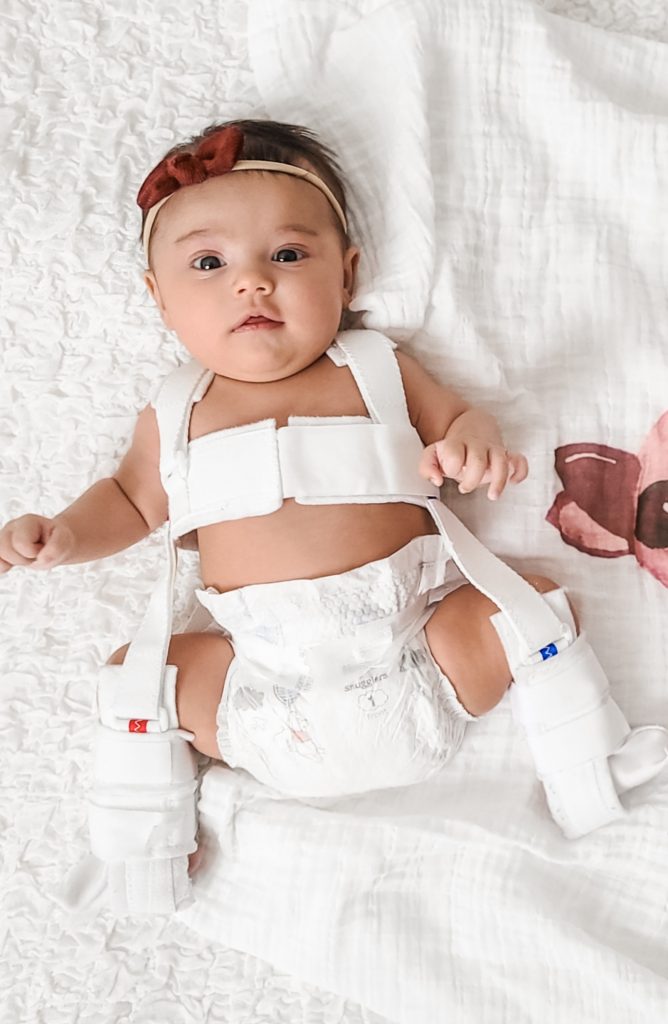
The specialist felt very very confident in this treatment approach and reassured me that Eva would grow up to be able to do whatever she wanted to do in life (soccer, gymnastics, rugby, hockey, pole-vaulting, swimming, running marathons, ballet, you name it) because we discovered it early and we were treating it.
Her assurance didn’t make things physically, mentally or emotionally easier for us that first week though.
IT'S OKAY TO FEEL SAD ABOUT IT
As a postpartum (super) hormonal new mom, I really struggled for the first week. I had to relearn everything: diaper changing, clothing her, sponge-bathing her, holding her, breastfeeding her. It was all different and the adjustment was difficult not only for me, but especially for her. She was extra clingy, constantly nursing for comfort. We totally regressed with sleeping at night. She cried. I cried. We were both exhausted.
I was finally feeling like I was getting the hang of things as a mother and then I felt a massive setback in my postpartum anxiety. I had moments where I was so angry at my body for “failing”; for not maintaining enough amniotic fluid to keep her comfortable while she grew, and for my womb for not allowing enough space for her hips to develop correctly. And how could I have never noticed her hip dislocating?! I was so upset with myself. Of course, I KNOW none of this was in my control, but in the moment, it was so hard to see my baby like that. She was no longer little and squishy. Cuddles were different. She was stiff and rigid. The brace made her go up a whole clothing size. I went from having a newborn to a bulky babe after 1 doctor’s appointment.
My emotions took over.
I mourned over the fact that she couldn’t wear any of the cute 0-3m clothes she was finally fitting in. No more cute baby shoes. I couldn’t see her cute itty bitty baby feet. She was just starting to love baths and I couldn’t bathe her.
Friends and family members were so sweet and caring. Everyone told me (countless times) that, “she won’t remember any of it” — “it’s only temporary” — “babies are so resilient” — “it’ll be worth it in the end” — which is ALL TRUE, however, it’s not what I wanted to hear in that moment. I remember thinking, “I wish everyone would just shut-up. YES, it will get better, but… right now everything straight-up sucks.” I spent the entire first week Googling success stories and crying.
For anyone reading this that is going through a similar situation: it is OKAY to feel the way you feel. Your feelings and emotions are totally valid.
After the first week, I was in a much better headspace. I did feel so so incredibly grateful that her pediatrician caught it so early. I was so thankful that we could treat it so that she could have a normal childhood. I also embraced all the extra snuggles that she demanded.
I was so glad that Noah and I have knowledge in anatomy and physiology. When I put my “clinician-hat” back on, it helped my “mom-heart” calm down. I could see how fortunate we are to live in a world with modern medicine where the Pavlik Harness even exists and Eva would never remember any of it. I could envision my Eva girl playing and running around pain-free as a toddler, child, adolescent, and adult. I could see how WORTH IT this all was. And I knew things could be so much worse. Besides her dang hips and flat-head, Eva is SO healthy. We are so blessed.
It’s admittedly true: babies are super resilient. I quickly noticed that the harness hurt my mama-heart more than it impacted Eva at all. I also learned a lot of tips and tricks that made our experience easier (keep scrolling within this blog post to read those!).
1st check-up: after being in the harness for 1 week. The specialist made small adjustments to the straps to accommodate Eva’s growing body (babies grow so fast *cue tears*). She also made sure that Eva’s nerves were functioning correctly. If the straps are too tight around the legs, it can cause compression of the peroneal nerve (this would be Bad News Bears). To monitor this at home, we were instructed to keep an eye on knee, ankle and foot movement. Your baby should be able to slightly extend their knee, move their ankle up and down, as well as wiggle their toes. If they stop doing this, loosen the Velcro around their legs and call your specialist.
2nd check-up: Eva received an ultrasound to see how her hips were responding to the Pavlik Harness. The tech left her in the harness and didn’t place any stress on the hips.
Her right hip alpha angle improved from 49° to 58°! (Alpha angle needs to be >60°). Great progress!
Her right hip %coverage improved from 25% to 70%! (% coverage should be >50%). Amazing!
I was shocked at how much had changed, in a positive way, in only 2.5 weeks. The orthopedic specialist originally thought Eva would be in the harness for 12+ weeks, but based on these results, she predicted possibly getting Eva out of the harness at 6-ish weeks.
3rd check-up: harness check/strap adjustments
4th check-up: Eva received another hip ultrasound for updated measurements — this time out of her harness, with stress placed on her hips.
Her right hip alpha angle was now 63°!
Her right hip %coverage was 73%!
We were declared hip-healthy after 6.5 weeks in the Pavlik Harness! We did not have to wean out of the harness. The specialist took Eva out of the harness right there in her office and we went home harness-free!! (Best day ever!)
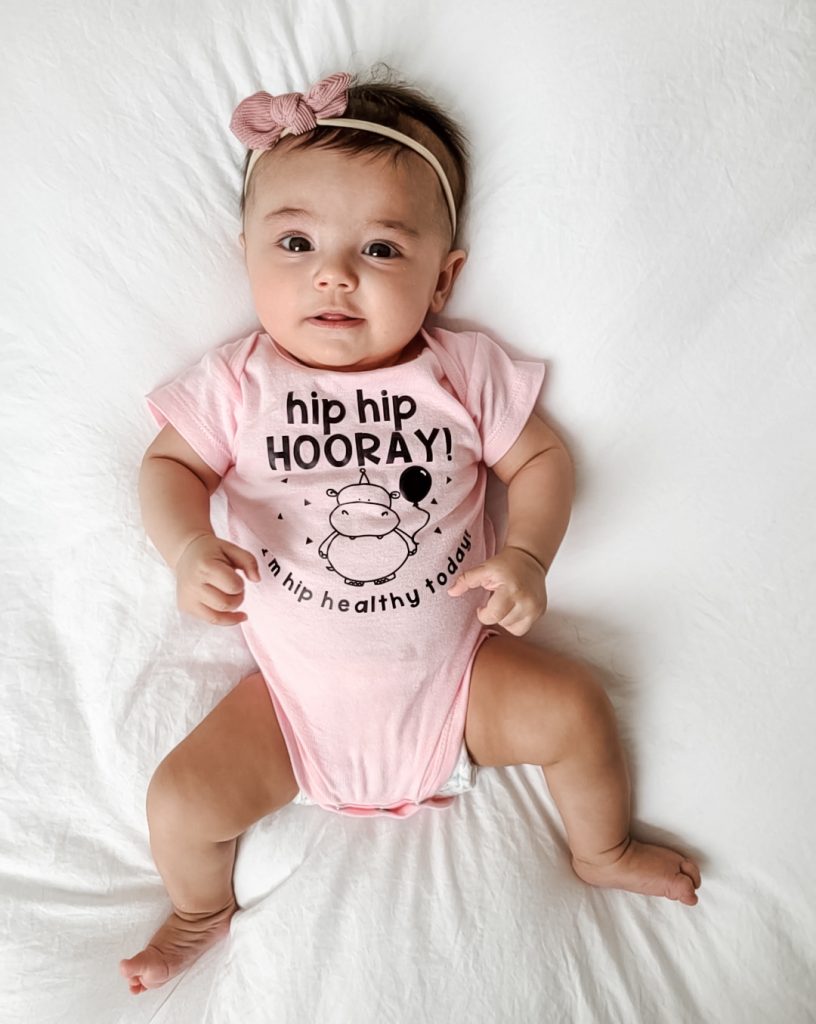
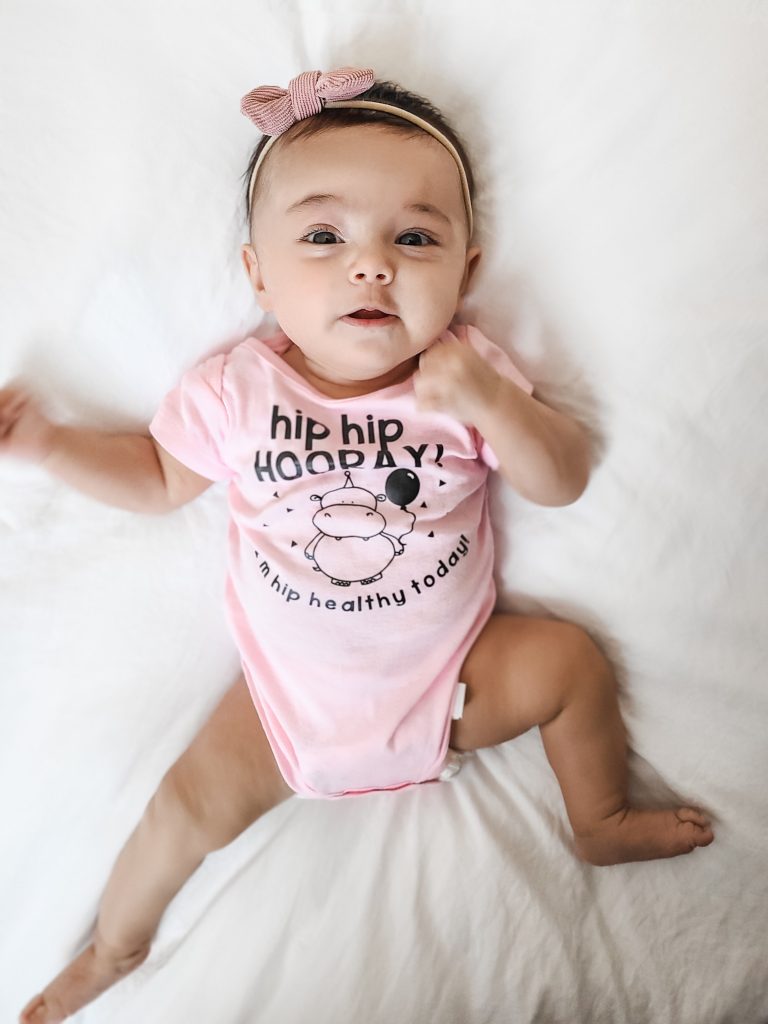
5th check-up: 1 month of being out of the Pavlik Harness. Eva received an ultrasound to see how her hips were doing. Her measurements looked so great, that the specialist canceled our 6 month check-up and told us to follow-up again when Eva turns 1 in November. At that appointment, they will do an x-ray to make sure her hips are still healthy!
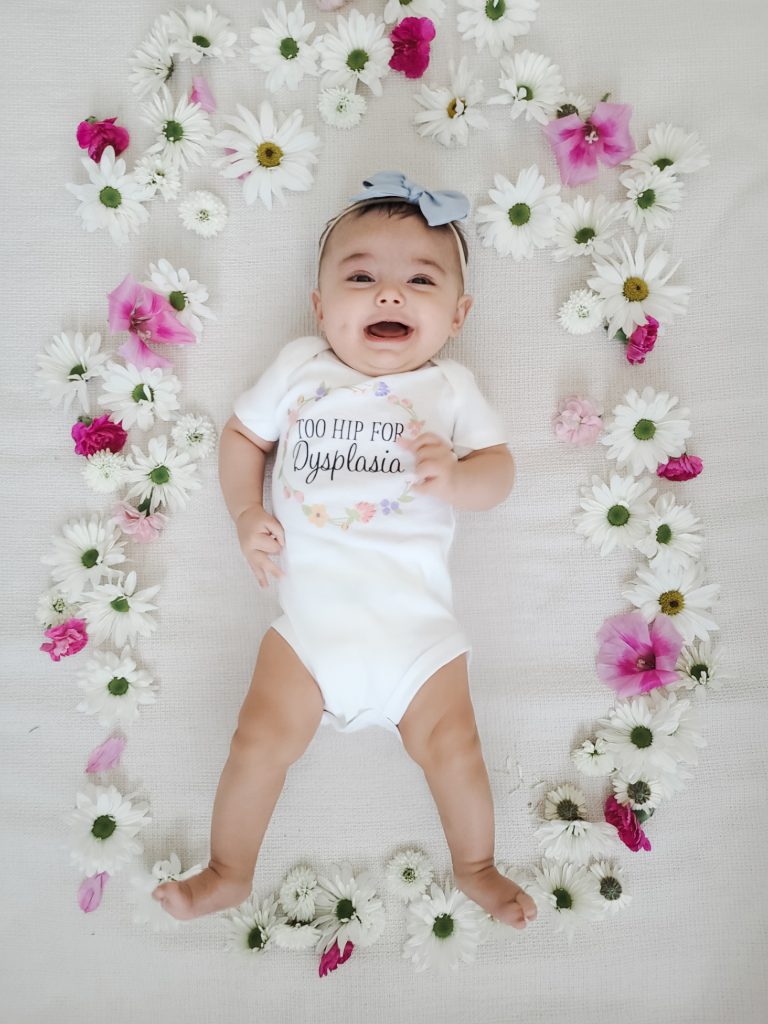
A baby who spits up and has blow-outs is required to wear a white harness 24/7? NICE. Genius. *Insert eyeroll here*. Buuuuuut it is what it is, so here are some MUST-HAVES:
- Pavlik Harness Covers from Etsy! We got 2 sets and they were shipped super fast. With 1 set, you get covers for the 2 shoulder straps, 2 front leg straps, as well as the chest strap. Instead of putting the shoulder straps on, I put them on the BACK leg straps. That way, if she had a blowout, the covers took the blow and I could wash them.
- Go up a size in diapers! With your baby’s legs spread out in the harness, you’ll really want to make sure that when you put a new diaper on, you pull the ruffles out along allllll edges of the diaper! We still do this to this day, it helps contain those really messy diapers!!
- Tide-to-Go Sticks! Helps with those stubborn stains!
Since we were required to keep our harness on 24/7 (again our orthopedic specialist was very adamant on this, perhaps that’s why we had such quick results?), baths were not an option. Instead, I would wet a baby washcloth with some baby shampoo, squeeze out as MUCH water as I could (so the washcloth was hardly wet, mostly just damp), and wipe Eva’s skin, making sure to pay extra attention to her armpits, behind the knees and under her neck. I’d also be sure to avoid getting the harness wet. Wet harness = smelly harness.
I also used (and still use) Mustela Baby Cleansing Water. I originally got this before the harness days, for Eva’s baby acne. It works wonders. So every day, I put 1 pump of this magic stuff on a cotton pad and gently wipe her face and neck.
Switching up breastfeeding positions was tricky. The koala position was our go-to. You can also try cross-koala (baby over one thigh, nursing from the opposite breast).
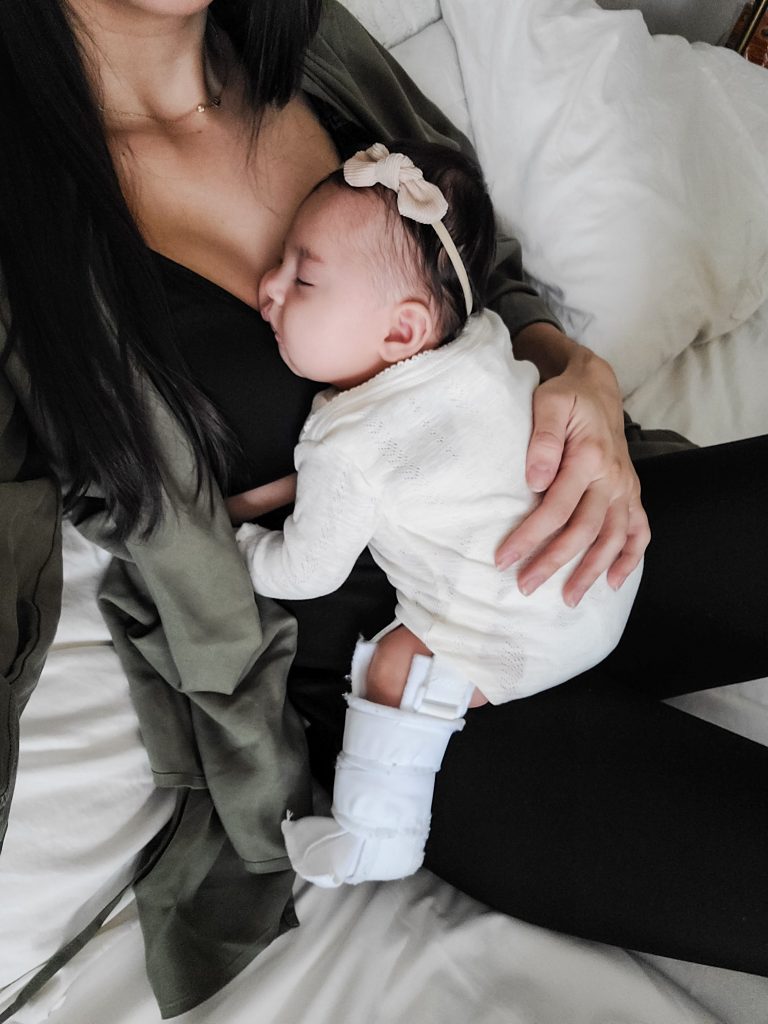
Another option is the cross cradle, but loop your one arm through baby’s legs, cradling the bum (so arms between the legs). We did this a couple times, but I personally ended up preferring the koala. It felt less cumbersome and I think it actually helped her develop some head control faster!
Eva struggled with sleeping really bad the first few nights because of her legs dangling. I rolled up a receiving blanket and propped it under her legs. This helped immensely!! Our pediatrician actually recommended this to us and she’s a HUGE advocate for safe sleep, so I felt safe doing this.
Eva loved to be swaddled. She startled a lot and that wakes her up. Since she was nowhere near rolling in this harness, we were OK’d to keep swaddling and got the Anna and Eve Swaddle. It was perfect because it didn’t touch the hips at all and still kept her arms down.
We tried the Embe Babies Transitional Swaddle – Legs Out which was fantastic overall! The concept is brilliant so that you can swaddle the legs out. It’s also a great for transitioning your baby out of a swaddle. It fit kind of large on Eva though (she was only 9lbs and 2 months when she was fitted with the harness), so we had to fold the zipper under in a goofy way. It worked, but it’d be better for a larger baby.
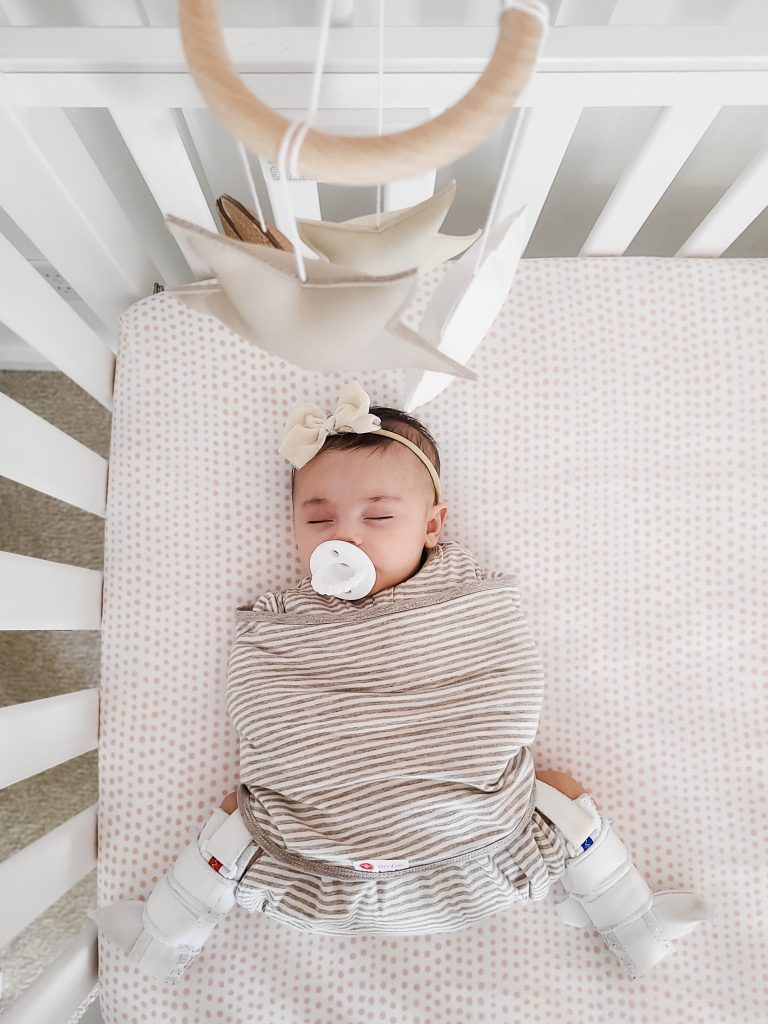
I also strongly considered the Love to Dream SWADDLE UP Hip Harness Swaddle. I’ll honestly probably invest in this if one of my future babies gets diagnosed with DDH.
Again (I know this is redundant but I feel it’s important), we were instructed to keep Eva’s harness on 24/7, so all clothing needed to be put on over the harness. We were told that if you remove the harness to put a onesie on underneath, you risk undoing a lot of the progress you have made. Everyyyy specialist is different and has different viewpoints — this is just what our specialist recommended to us, so we stuck with it 100%.
Easiest way to make the harness “cuter” is to cover the legs with baby knee high socks! I got Eva’s socks on Amazon! I ordered the 0-6 month and they fit great over the harness. Such a great price too – 5 pairs for $13! They sell the SAME EXACT knee highs in a lot of these Instagram shops/boutiques and charge like $11 per sock, it’s a crime haha
For onesies, I sized up to 3-6m and those worked nicely! I also started finding some really cute stuff on Amazon for cheap (again same outfits as these boutiques!) and ordering 0-6m or 3-6m. My favorite outfit to style over the Pavlik Harness was the “bubble romper”. These outfits have more forgiveness around the hips because of the “bubble-butt style”. But be careful — I learned the hard way that they shrink in the dryer! These were some of my fav purchases:
I sized up in onesies and oversized sweatshirt rompers from Little One Shop and these were always SO cute with a pair of leg warmers and a cute hair-bow! Little One Shop always has sales and you can use my code LORI20 on top of the sales for an even bigger discount.
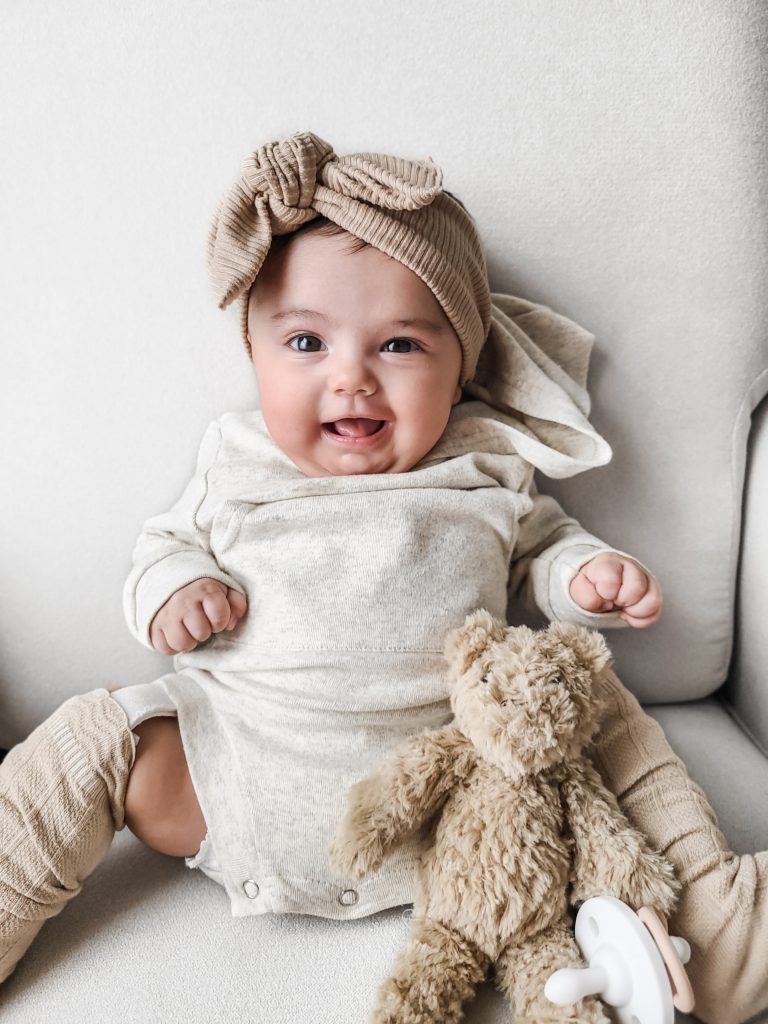
I hope this post helps give you some support, encouragement and hope along your journey with Developmental Hip Dysplasia. Please don’t hesitate to contact me (comment on here, email me, check out my Instagram) if you have any other questions!
Do you have past experience with DDH? Any other tips or tricks that worked for you that I should mention? Let me know! 🙂

